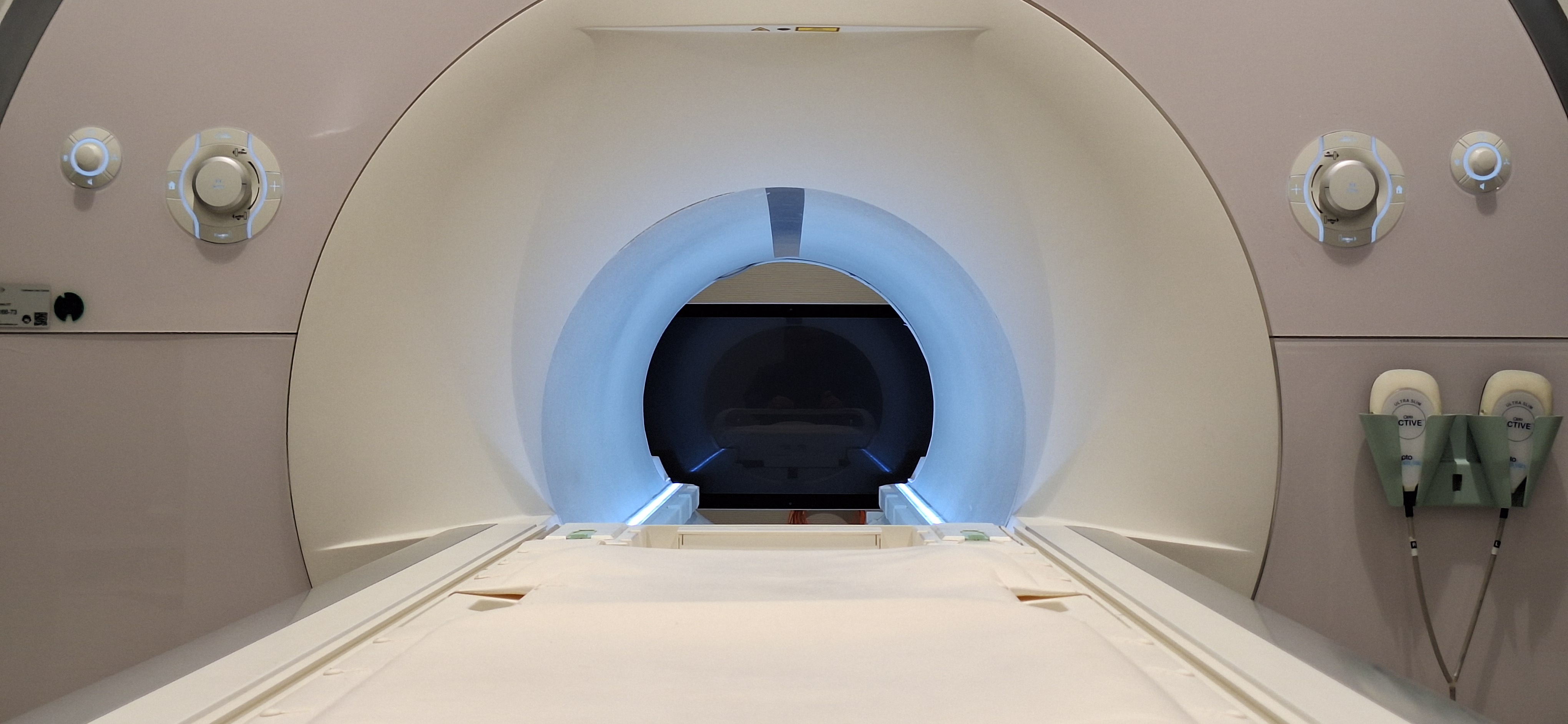
Resources & Techniques
Scanners
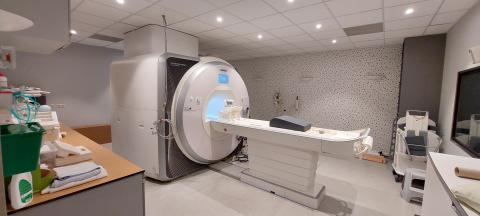
3T Siemens Prisma Fit MRI scanner
The research-dedicated 3.0T Siemens Prisma Fit scanner is located in the CORE GIfMI building on the Ghent University Hospital campus, Entry 55 and is available 24/7.
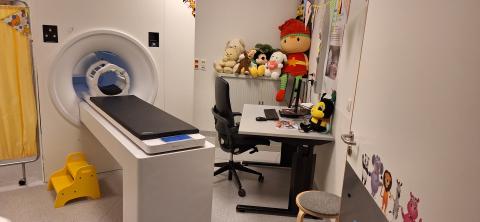
MRI Simulator
The MRI Simulator is available to all MRI researchers at no charge. The MRI Simulator gives subjects exposure to the scanner by realistically reproducing the scanning environment.
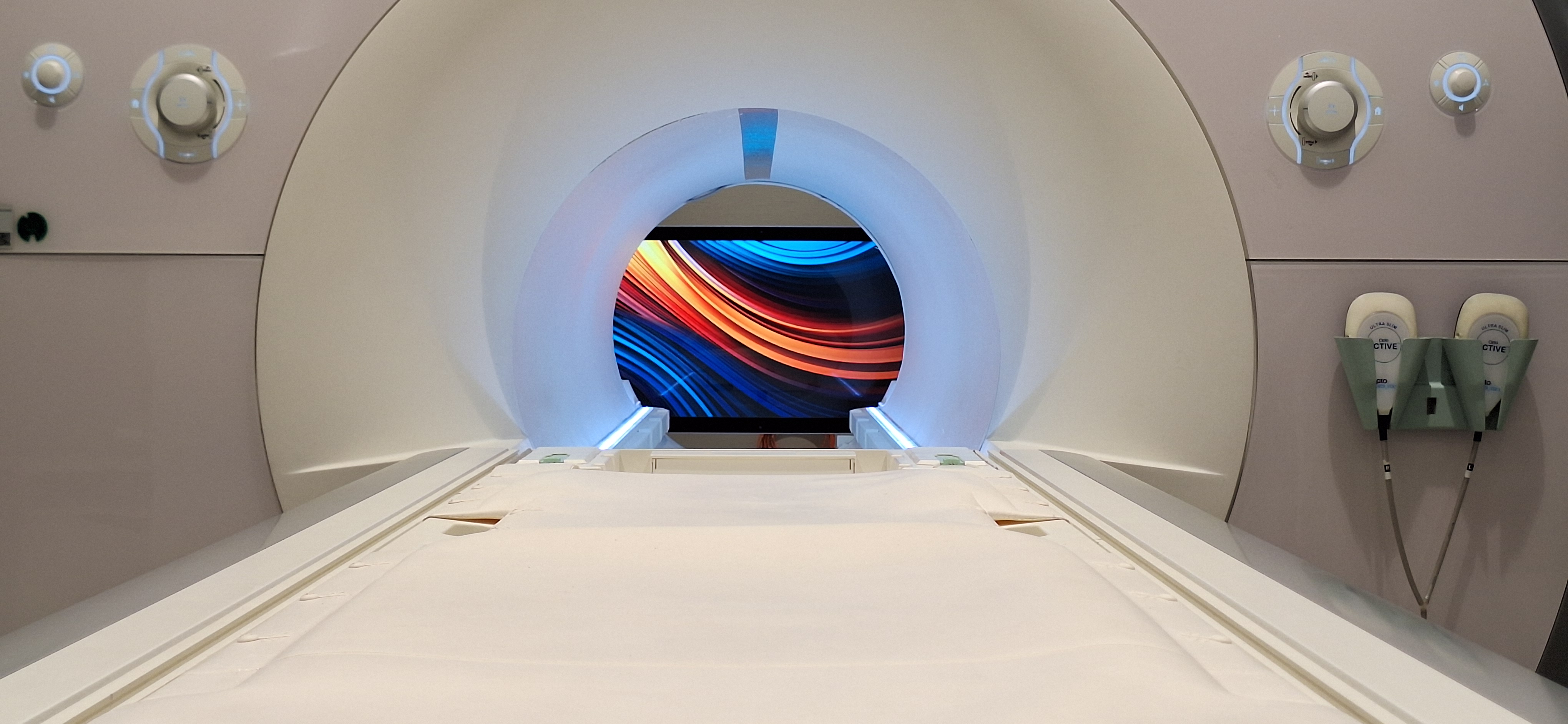
Psychophysiological Lab in the Magnet
CORE GIfMI is equipped with high-quality, dedicated equipment to support psychophysiological research within the MRI environment. This setup enables researchers to conduct advanced studies integrating neuroimaging with physiological measurements.
Visual system
- The BOLDScreen 32 UHD display (Cambridge Research Systems Ltd.) is a high-performant fully MR compatible LCD video display which can be used for research and entertainment purposes.
- A 4x4 channel video switch allows easy switching of multiple inputs and outputs avoiding changes cables.
Audio system
- The built-in communication system provides basic communication between the participant and the operator.
- The OptoActive II system (Optoacoustics Ltc.) provides high-fidelity audio with ANC (active noise cancellation) for EPI-based sequences.The FOMRI-III microphone supports clear communication between the participant and the operator, even during scanning.
Response system
- The Lumina 4G (Cedrus Corporation) provides multiple 4-button layouts for response collection during fMRI data acquisition. It also support synchronization with MRI trigger.
- The fMRI Trackball (Nata Technologies Inc.) provides mouse cursor navigation during fMRI data acquisition. It can for instance be used to acquire a Visual Analog Scale value or to point targets on the display.
MRI synchronization triggering
- Custom-built hardware based on Arduino provides multi-channel signal conditioning and synchronisation between the scanner an external equipment like the stimulus PC or the BIOPAC system.
Eyetracking
- The EyeLink 1000 Plus (SR Research Ltd.) is a video-based monocular eyetracker. Combined with the LCD video system, it provides accurate eyetracking in the magnet.
Physiological monitoring
- The built-in physiological monitoring system provides easy access to ECG and respiration signals for acquisition gating or physiological noise corrections.
- The MP150 with extension modules and amplifiers (Biopac Systems Inc.) supports the simultaneous acquisition of multiple physiological signals as well as analog and digital signals. Synchronization with the MRI scanner and other equipment ensures accurate time labeling of the collected data.
- The available modules are:
- MP150: the main module
- HLT100C: high-level output transducers interface
- STP100C: isolated digital interface
- UIM100C: universal interface module
- DA100C: general purpose transducer (for new RSP transducer)
- CO2100C: carbon dioxide measurement module
- RSP100C: respiration amplifier
- ECG100C-MRI: electrocardiogram amplifier
- PPG100C-MRI: photo plethysmogram amplifier
- EDA100C-MRI: electrodermal activity amplifier
Stimulus PC
- A powerful PC with dual-monitor setup provides full control over your experiment. It can also be used for entertainment purposes by providing the subject with relaxing music or a movie.
- Currently provided software
- Matlab/Octave
- Conda as open source package manager
- PsychoPy (actively supported)
- Presentation (actively supported)
- Psychtoolbox (not actively supported)
- E-Prime (not supported)
- Other tools may be installed on request
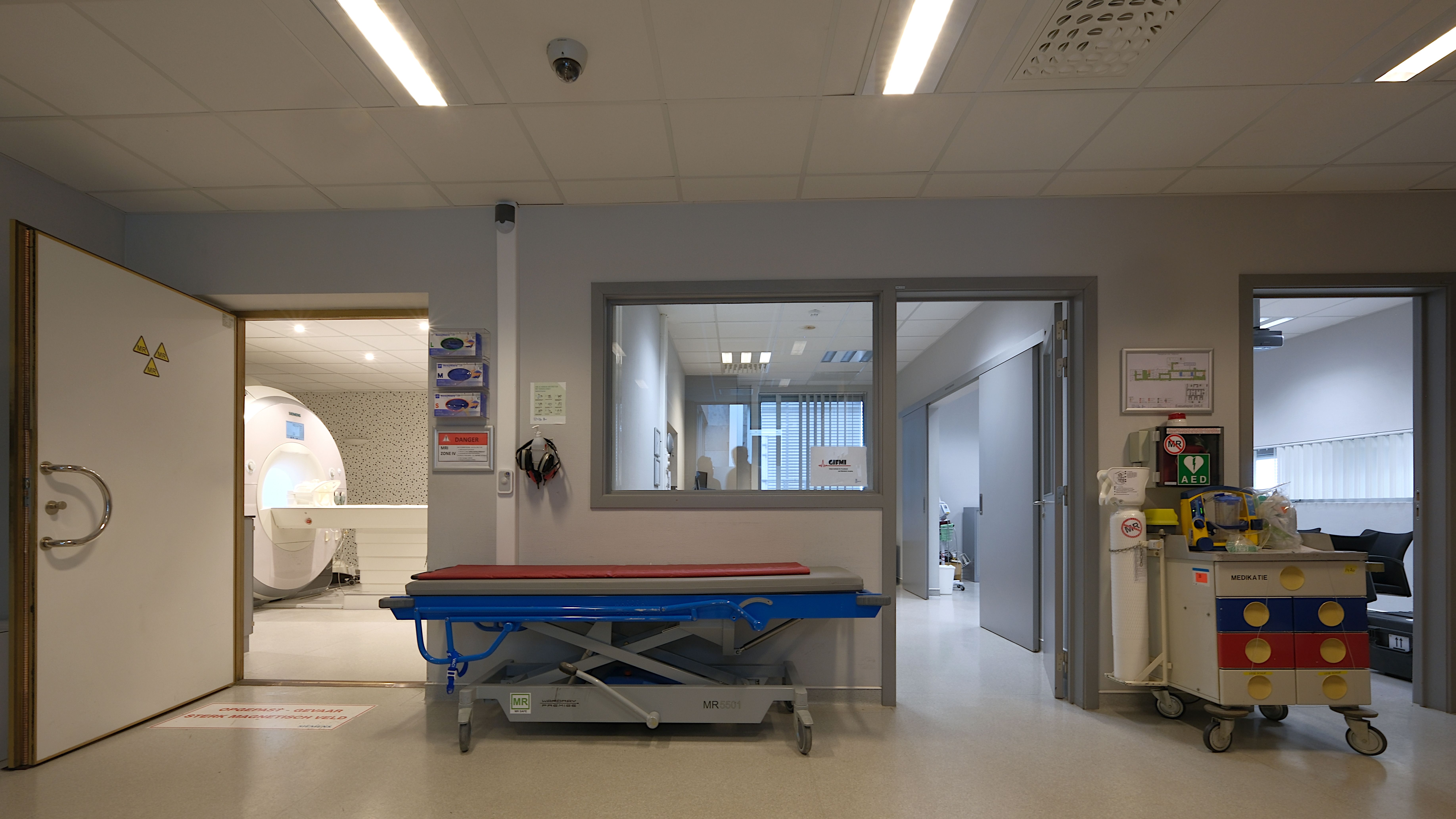
Facility Features
CORE GIfMI is housed in a dedicated building on the Ghent University Hospital campus. This enables researchers to fully focus on their tasks without disruption. Get familiar with our facility by visiting us virtually in the online tour.
Meeting room Hippocampus
- The Hippocampus meeting room seats up to 12 people and is equipped with a table and projector. It is available for researchers with a valid booking.
- Common uses include:
- Briefing and debriefing study participants
- Workspace for scanning buddies during sessions
- Meetings with the CORE GIfMI Operational team
- MRI Safety Training sessions
Control room
- The control room houses all MR control equipment and peripheral equipment for advanced research like fMRI, physiological monitoring en elastography.
- A large window between the control room and the scanner room and a video monitoring system allows permanent visual monitoring of the participant in the MR scanner.
Scanner room
- The MRI scanner room houses the MR scanner and peripheral equipment like the video display, audio system, response systems, etc.
- This room is built inside a Faraday's cage which blocks all incoming and outgoing electromagnetic waves which could disturb the scanner or other equipment.
- Audiovisual equipment is can also be used for participant entertainment if the research study permits it.
TMS room
- The facility houses a Transcranial Magnetic Stimulator (TMS) managed by the Department of Psychology.
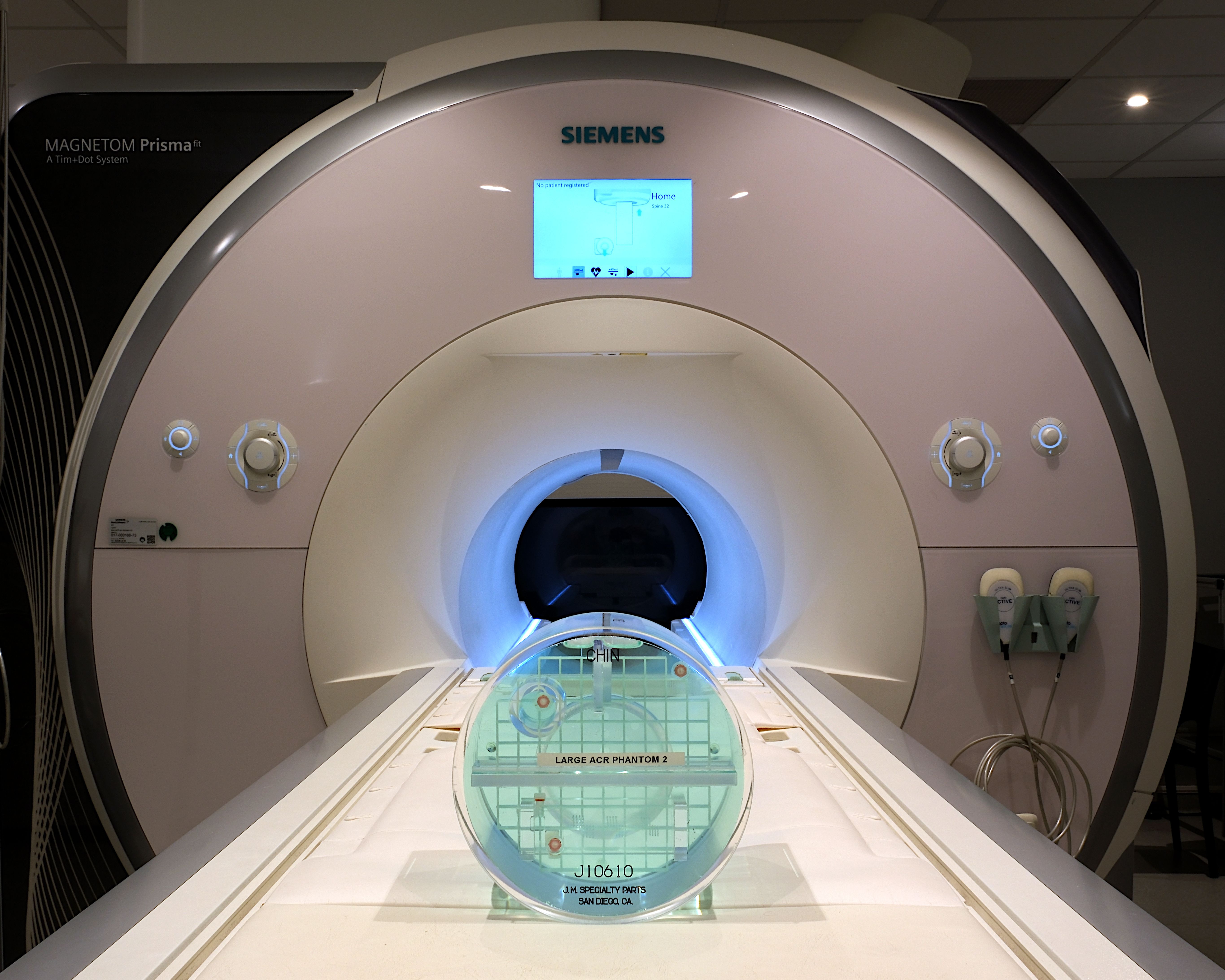
Other equipment
CORE GIfMI also houses specific hardware and software for specialist MR data acquisition.
Magnetic Resonance Elastography
- Magnetic Resonance Elastography (MRE) is technique to quantify the stiffness of tissue in the body. The MR Elastography device (T.H.E.A-Devices GmbH) generates low-frequency vibrations in tissue. A special sequence and post-processing software calculates the elastogram. More to find on the Techniques page.
QASPER (Quantitative Arterial Spin Labelling Perfusion Reference)
- QASPER (Quantitative Arterial Spin Labelling Perfusion Reference, Gold Standard Phantoms Ltd) is a calibration and quality assurance standard for MRI perfusion measurements using Arterial Spin Labelling (ASL). It simulates the process of delivery of arterial blood to an organ in a controlled and reproducible manner. More information can be found on the manufacturer's website.

Computing Facilities
CORE GIfMI does not provide computing facilities but collaborates closely with HPC-UGent, the High Performance Computing infrastructure of Ghent University. As a strategic partner of the Flemish Supercomputing Center, HPC-UGent offers researchers access to a variety of image processing tools on its HPC infrastructure.
Some tools available at the HPC-UGent are
- Neurodesk: a server-side containerized environment for neuroimaging data analysis, providing access to all major open-source neuroimaging tools.
- Major (neuro)imaging processing software like FSL, MRtrix, SPM, FreeSurfer, nipype, nilearn
- Preprocessing tools like ANTs, SimpleElastix
- Image format tools like pydicom, dicom2nifti, NiBabel, MedPy
- High-level programming languages like Python, Matlab, R, Lua, Go
- Tools can be added on request by the HPC-UGent team
Data Management
CORE GIfMI is currently working on a XNAT (Extensible Neuroimaging Archive Toolkit) instance to manage all MR research images and metadata.
Once fully operational, this system will provide researchers with a structured and secure platform for storing, sharing, and processing imaging data.